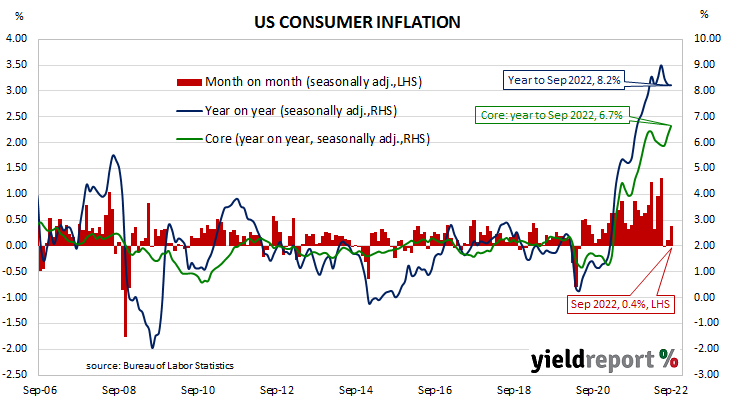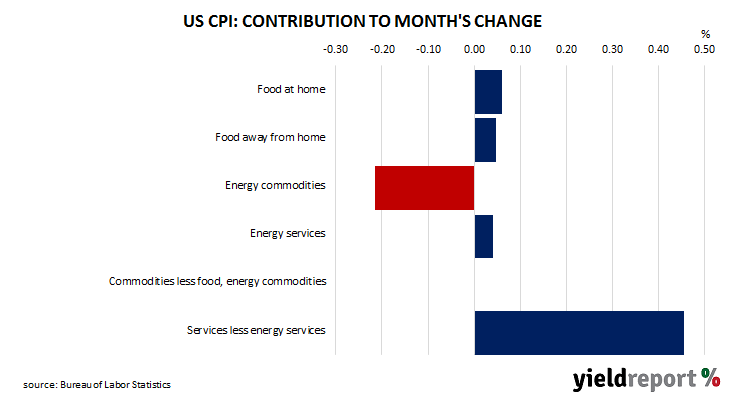Summary: US CPI up 0.4% in September, more than expected; “core” rate up 0.6%; core inflation highest in 40 years, “no ease in inflationary pressures”; Treasury yields up during volatile day, rate rise harden noticeably; non-energy services main driver, adds 0.46 ppts.
The annual rate of US inflation as measured by changes in the consumer price index (CPI) halved from nearly 3% in the period from July 2018 to February 2019. It then fluctuated in a range from 1.5% to 2.0% through 2019 before rising above 2.0% in the final months of that year. Substantially lower rates were reported from March 2020 to May 2020 and they remained below 2% until March 2021. Rates have since risen significantly.
The latest CPI figures released by the Bureau of Labor Statistics indicated seasonally-adjusted consumer prices increased by 0.4% on average in September. The result was above the generally expected figure of 0.2% as well as August’s 0.1% increase. On a 12-month basis, the inflation rate remained steady at 8.2%.
“Headline” inflation is known to be volatile and so references are often made to “core” inflation for analytical purposes. The core prices index, the index which excludes the more variable food and energy components, increased by 0.6% on a seasonally-adjusted basis for the month. The rise was greater than the 0.4% expected but in line with August’s figure, taking the annual growth rate from 6.3% to 6.7%.
“The core CPI print was the highest in 40 years with the monthly reading lifting to 0.6%, implying no ease in inflationary pressures yet, with five of the past six months coming in at that rate or higher,” said NAB currency strategist Rodrigo Catril.
US Treasury bond yields closed higher after experiencing a volatile day. By the close of business, the 2-year Treasury yield had gained 4bps to 4.32%, the 10-year yield had inched up 1bp to 3.93% while the 30-year yield returned to its starting point at 3.91%.
In terms of US Fed policy, expectations of higher federal funds rates over the next 12 months noticeably hardened. At the close of business, November contracts implied an effective federal funds rate of 3.815%, 73bps higher than the current spot rate. December contracts implied 4.22% while September 2023 futures contracts implied an effective federal funds rate of 4.77%, nearly 170bps above the spot rate.
The largest influence on headline results is often the change in fuel prices. Prices of “Energy commodities”, the segment which contains vehicle fuels, decreased by 4.7% and subtracted 0.22 percentage points. However, prices of non-energy services, the segment which includes actual and implied rents, had the largest effect on the total, adding 0.46 percentage points after increasing by 0.8% on average.



